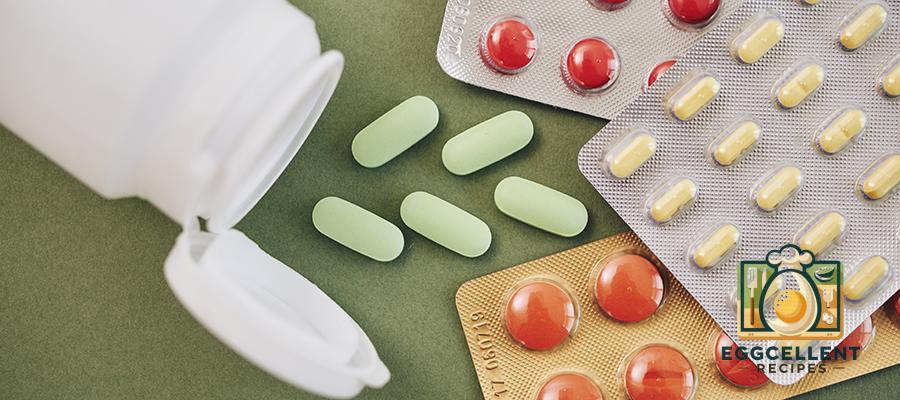
High cholesterol is a common health concern that can lead to serious complications if left unmanaged. Cholesterol itself is a fatty substance produced by the liver and obtained from certain foods. While the body needs some cholesterol to function properly, too much low-density lipoprotein (LDL) cholesterol—often referred to as “bad” cholesterol—can increase the risk of heart disease, stroke, and other cardiovascular issues.
One of the challenges with high cholesterol is that it typically doesn’t present obvious symptoms. Many people may not realize they have high cholesterol until they undergo a blood test or experience a significant health event. However, there are certain signs, risk factors, and conditions associated with elevated cholesterol levels that can serve as warning indicators. This article will explore these signs and emphasize the importance of monitoring cholesterol levels for maintaining heart health.
Understanding Cholesterol
Before delving into the signs, it’s essential to understand the two main types of cholesterol:
- Low-Density Lipoprotein (LDL) Cholesterol: Known as “bad” cholesterol, LDL can build up in the walls of your arteries, forming plaque that narrows and hardens the arteries—a condition called atherosclerosis.
- High-Density Lipoprotein (HDL) Cholesterol: Known as “good” cholesterol, HDL helps remove LDL cholesterol from the arteries, transporting it back to the liver for processing and elimination.
Maintaining a healthy balance between LDL and HDL cholesterol is crucial for cardiovascular health.
Why High Cholesterol Often Goes Unnoticed
High cholesterol is often referred to as a “silent” condition because it doesn’t usually cause symptoms. Many individuals are unaware of their high cholesterol levels until they have a routine lipid panel blood test or suffer from a heart attack or stroke. This lack of symptoms makes regular health screenings vital, especially for those with risk factors.
Potential Signs and Indicators of High Cholesterol
While high cholesterol itself doesn’t cause symptoms, certain physical signs and associated conditions can hint at elevated cholesterol levels:
1. Xanthelasma (Cholesterol Deposits Around the Eyes)
- What It Is: Soft, yellowish fatty deposits that form under the skin on or around the eyelids.
- Why It Happens: High levels of cholesterol in the blood can lead to the formation of these deposits.
- What to Look For: Painless, flat or slightly raised yellow patches on the upper and lower eyelids, near the inner corner of the eye.
2. Xanthomas (Fatty Deposits in the Skin and Tendons)
- What It Is: Fatty growths or lumps that can appear on various parts of the body, including elbows, knees, hands, feet, and buttocks.
- Why It Happens: Accumulation of cholesterol deposits due to high levels in the bloodstream.
- What to Look For: Small, painless bumps or larger nodules that are yellowish in color.
3. Coronary Artery Disease Symptoms
High cholesterol can lead to coronary artery disease (CAD), which may present symptoms such as:
- Chest Pain (Angina): Discomfort, heaviness, or tightness in the chest that may spread to the arms, neck, jaw, or back.
- Shortness of Breath: Difficulty breathing during activities or at rest.
- Heart Palpitations: Irregular heartbeats or a fluttering sensation in the chest.
- Fatigue: Feeling unusually tired or fatigued with minimal exertion.
These symptoms indicate that the arteries supplying blood to the heart are narrowed or blocked due to plaque buildup.
4. Peripheral Arterial Disease (PAD) Symptoms
High cholesterol can contribute to PAD, affecting blood flow to the limbs:
- Leg Pain While Walking (Claudication): Muscle pain or cramping in the legs or hips during activity, which subsides with rest.
- Numbness or Weakness in Legs
- Coldness in Lower Leg or Foot
- Sores on Toes, Feet, or Legs That Heal Slowly
5. Stroke Symptoms
A blockage in the arteries supplying blood to the brain can cause a stroke. Warning signs include:
- Sudden Numbness or Weakness: Particularly on one side of the body.
- Confusion or Trouble Speaking
- Difficulty Seeing in One or Both Eyes
- Loss of Balance or Coordination
- Severe Headache with No Known Cause
If you or someone else experiences these symptoms, seek emergency medical attention immediately.
6. High Blood Pressure (Hypertension)
Elevated cholesterol can contribute to high blood pressure by narrowing the arteries, forcing the heart to work harder to pump blood.
- What to Look For: Often called a “silent killer,” high blood pressure may not present noticeable symptoms but can be detected through regular monitoring.
7. Reduced Blood Flow
Plaque buildup from high cholesterol can reduce blood flow, leading to:
- Erectile Dysfunction in Men: Difficulty achieving or maintaining an erection.
- Kidney Function Issues: Resulting from reduced blood flow to the kidneys.
Risk Factors Associated with High Cholesterol
Certain factors increase the likelihood of having high cholesterol:
- Family History: Genetic predisposition, known as familial hypercholesterolemia.
- Poor Diet: High intake of saturated fats, trans fats, and cholesterol-rich foods.
- Obesity: Excess body weight, particularly around the waist.
- Lack of Physical Activity: Sedentary lifestyle can lower HDL (good) cholesterol.
- Smoking: Damages blood vessel walls, making them more prone to accumulate fatty deposits.
- Age and Gender: Cholesterol levels naturally rise with age. Men are generally at higher risk earlier in life, but women’s risk increases after menopause.
- Medical Conditions: Diabetes, hypothyroidism, and liver or kidney disease can affect cholesterol levels.
Importance of Regular Cholesterol Screening
Due to the lack of overt symptoms, regular cholesterol screening is crucial:
- Lipid Panel Test: Measures total cholesterol, LDL cholesterol, HDL cholesterol, and triglycerides.
- Recommended Screening Age:
- Adults: Starting at age 20, every 4-6 years if risk is low.
- Men Aged 45-65 and Women Aged 55-65: Every 1-2 years.
- Individuals with Risk Factors: More frequent testing as advised by a healthcare provider.
Managing and Lowering High Cholesterol
If diagnosed with high cholesterol, several strategies can help manage and reduce levels:
1. Dietary Changes

- Reduce Saturated and Trans Fats: Found in red meat, full-fat dairy products, fried foods, and commercially baked goods.
- Increase Soluble Fiber Intake: Foods like oats, barley, beans, lentils, fruits, and vegetables help reduce LDL cholesterol.
- Incorporate Healthy Fats: Use olive oil, avocados, and nuts; choose fatty fish rich in omega-3 fatty acids.
- Limit Dietary Cholesterol: Found in organ meats, egg yolks, and shellfish.
2. Regular Physical Activity

- Aim for At Least 150 Minutes of Moderate-Intensity Exercise Per Week: Activities like brisk walking, cycling, or swimming.
- Incorporate Strength Training: At least two days per week.
3. Maintain a Healthy Weight

- Weight Loss: Losing even 5-10% of body weight can significantly reduce cholesterol levels.
4. Quit Smoking

- Benefits: Improves HDL cholesterol levels and overall cardiovascular health.
5. Limit Alcohol Intake
- Moderation: Up to one drink per day for women and two drinks per day for men.
6. Medication

- Statins: Help lower LDL cholesterol.
- Other Medications: Such as bile acid sequestrants, cholesterol absorption inhibitors, or PCSK9 inhibitors.
- Consult a Healthcare Provider: To determine the most appropriate medication based on individual health needs.
When to See a Healthcare Provider
- Routine Check-Ups: Even without symptoms, regular health screenings are essential.
- If You Have Risk Factors: Discuss with your doctor about starting screenings earlier or more frequently.
- Experiencing Symptoms of Heart Disease or Stroke: Seek immediate medical attention.
Final Thoughts
High cholesterol is a significant risk factor for heart disease and stroke but often goes unnoticed due to its asymptomatic nature. Being aware of the subtle signs and associated conditions can prompt timely medical evaluation and intervention. By adopting a healthy lifestyle, getting regular screenings, and following medical advice, you can manage cholesterol levels effectively and reduce the risk of serious health complications.






